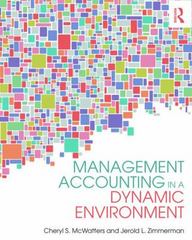Intermediate accounting 1
b. 12,545 12,545 d. 16,315 (15,000) On July 1, 2003, East Co. purchased, as a long-term investment, P500,000 face amount, 8% bonds of Rand Corp. for p461,500 to yield 10% per year. The bonds pay interest semiannually on January 1 and July 1. In its December 31, 2003 balance sheet, East should report interest receivable of a. 18,460 b. 20,000 c. 23,075 d. 25,000 (AICPA) 6. Cap Corp. reported accrued investment interest receivable of P38,000 and P46,500 at January 1 and December 31, 2003, respectively. During 2003, cash collections from the investments included the following: Capital gains distributions 145,000 Interest 152,000 What amount should Cap report as interest revenue from investments for 2003? a. 160,500 b. 153,500 c. 152,000 d. 143,500 (AICPA) *"A capital gains distribution is a payment by a mutual fund or an exchange-traded fund (ETF) of a portion of the proceeds from the fund's sales of stocks and other assets. It is the investor's share of the proceeds from the fund's transactions." (www.investopedia.com) " Hint: T-account Use the following information for the next four questions: On Jan. 1, 20x1, Red Co. acquires P500,000 face amount, 10%, bonds of Ball Co. for P487,656. Red Co. incurred transaction costs equal to 5% of the face amount of the bonds. The bonds mature on Dec. 31, 20x3 and pay annual interest every Dec. 31. The bonds were quoted at 102 and 104 on Dec. 31, 20x1 and Dec. 31, 20x2, respectively. 7. What is the effective interest rate on the bonds and how much is the difference between the interest received and the interest income recognized in 20x2? a. 9%; 3,861 c. 14%; 5,389 558 Chapter 10 b. 11%; 6,392 d. 9%; 4,208ACTIVITY 2 556 Chapter 10 PROBLEM 4: MULTIPLE CHOICE - COMPUTATIONAL 1. On July 1, 2003, York Co. purchased, as investment measured at amortized cost, P1,000,000 of Park, Inc.'s 8% bonds for P946,000, including accrued interest of P40,000. The bonds were purchased to yield 10% interest. The bonds mature on January 1, 2010, and pay interest annually on January 1. York uses the effective interest method of amortization. In its December 31, 2003 balance sheet, what amount should York report as investment in bonds? a. 911,300 b. 916,600 c. 953,300 d. 960,600 (AICPA) Use the following information for the next three questions: On Jan. 1, 20x1, Koong Co. acquired 100, P5,000 face amount, 10%, 3-year 'term' bonds of King Co. for P428,567. Koong incurred transaction costs of P25,000 on the acquisition. The effective interest rate adjusted for the transaction costs is 14%. The bonds were quoted at 102 on Dec. 31, 20x2. 2. How much are the interest income in 20x2 and the carrying amount of the bonds on Dec. 31, 20x2 if the bonds are held under a "hold to collect" business model? a. 65,389; 482,455 c. 55,276; 472,834 b. 65,389; 510,000 d. 50,000; 453,567 3. How much are the interest income in 20x2 and the carrying amount of the bonds on Dec. 31, 20x2 if the bonds are held under a "hold to collect and sell" business model? a. 65,389; 482,455 c. 50,000; 428,567 b. 65,389; 510,000 d. 50,000; 510,000 4. What amount of gain (loss) is recognized if the bonds were sold on Jan. 3, 20x3 at 102, transaction costs of P15,000 were incurred on the sale, and the bonds were classified as: Amortized cost FVOCI Amortized cost FVOCI a. 12,545 (15,000) c. 12,545 0








